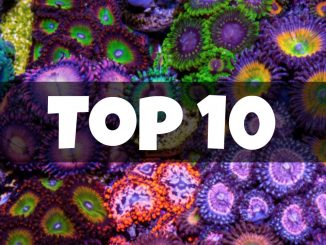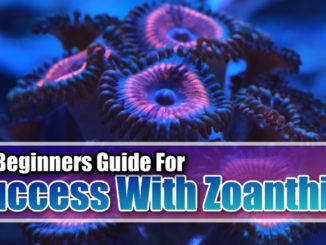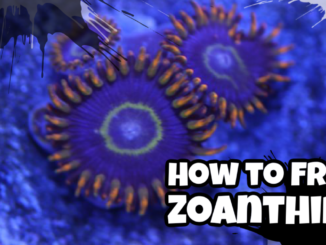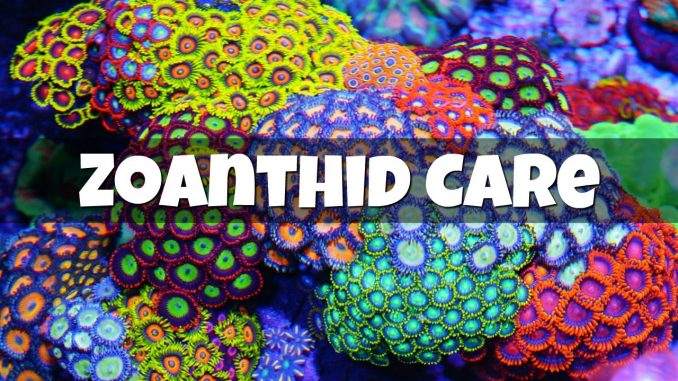
Hey Saltlydogs, Jeff Hesketh here, Today I wanted to write an article about zoanthids care. Zoathids are beautiful soft corals that are often the first coral new hobbyist buy, to bring home to their saltwater aquarium. Zoanthids are also know as Zoantharia or Zoas but they are not to be confused with their cousin Palythoas aka Palys.
Zoanthids do have a darker side do mostly to the fact that they contain a poisonous substance called Palytoxin. Palytoxin is considered to be one of the most toxic non-protein substances known and can be very dangerous to children, pets and hobbyist.
The idea behind this article is to help hobbyist that may be struggling zoanthid care
Selecting Zoanthids For Your Saltwater Aquarium
There isn’t an array of different species of zoas but there are many variations of different morphs. Morphs, refer to small changes in the coral’s appearance such as it’s patterns and coloration. All of the names associated with different morphs of zoanthids (and many other corals) are completely made up by leaders in the industry.
So when it comes to selecting zoanthids for your aquarium I recommend selecting the colors that are most appealing to you. Keep in mind your lighting in comparison to the sellers lighting because lighting plays a huge role in bringing out the colors of a zoanthid.
I also have an article on the top 10 zoanthids available on the market today so be sure to check that out, to get some ideas on the type and colors you are looking for.
Adding Zoanthids To Your Saltwater Aquarium
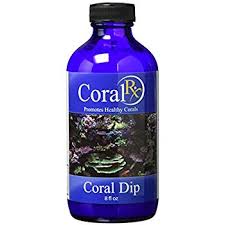
Dipping
Dipping zoanthids is a great substitute for those reef keepers that do not have a quarantine tank setup to temporarily house new corals for observation and treatment. Sadly, dipping corals is often over looked when acclimation new corals and often leads to huge problems down the road. Dipping zoas will bring your zoanthid care to the next level.
I recommend using a product called Coral RX when dipping Zoas.
Zoanthid care acclamation step-by-step:
This process should be followed step-by-step in conjunction with dipping Zoas a treatment or iodine solution.
- Turn off the aquarium lights.
- Dim the lights in the room where the shipping box will be opened. Never open the box in bright light.
- Float the sealed bag in the aquarium for 15 minutes. Do not open the bag at this time. Doing this will allow the water in the shipping bag to adjust to the temperature in the aquarium.
- Remove the bag from the aquarium.
- Carefully cut the bag open over the 5 gallon bucket and gently empty the the bag, the livestock and including the water, into the bucket.
- Using the airline tubing clip one end in the aquarium and clipping the other to the inside of the bucket. This step should be repeated for each bucket if you are acclimating multiply species at one time. You’ll need separate airline tubing for each bucket used.
- Begin a siphon by sucking on the end of the airline tubing, then place the airline into the bucket. When water begins flowing through the tubing, adjust the drip using the airline valve, to a rate of 2-4 drips per second.
- When the water volume in the bucket doubles, remove half and begin the drip again until the volume doubles a second time. Total acclimation time should be about one to two hours.
- The livestock can now be added to the aquarium.
- Disgard the remaining acclimation water in the buckets and replace the removed display tank water with fresh pre-mixed saltwater.
Zoanthids Placement In The Aquarium
There are two things to consider when talking about zoanthids placement, lighting requirements and water flow. When you consider these two eliminates will help you pick the best locations for your zoanthids. Most commonly zoas prefer low to moderate lighting and moderate flow.
Lighting Requirements: Low to moderate, although many will do fine under stronger aquarium lighting if properly acclimated first.
Water Flow: Moderate. Excessive flow may prevent them from opening fully.
Tank Placement: Low to mid.
How To Improve Zoanthids Growth
Zoanthid growth varies reef tank to
The best way to improve zoanthid grow is to maintain a pristine and stable marine environment in your aquarium. This will ensure the best conditions to promote growth. The next tip is to experiment with different locations within your aquarium, some location may be better suited for Them. A happy zoas are growing zoas.
Zoanthid Care Video
I found this great informational zoanthids care video on YouTube by a channel of the name of Maricktide.
Zoanthids Care Conclusion
Zoanthids are a beautiful edition to any saltwater aquarium. How we care for them will make the difference in how success they are. I recommend all hobbyist to consider buying aquaculture zoanthids as well as other corals, invertebrates and fish. The aquaculture of marine life will not only protect the saltwater aquarium hobby but it will save the wild reefs from over collection.
In the end, aquaculture is a win, win for everyone involved. By supporting aquacultured marine life we will be helping preserve the environment, and strengthening our communities with local jobs by investing our money closer to home.
My challenge to you, as you grow as a hobbyist is to simply inform yourself, educate others, buy aqua-cultured marine life when possible and by doing so will become a proactive representative for responsible reef keeping.
If you enjoyed our article or you are new to Mad Hatter’s Reef please take a moment to sign up for our FREE newsletter and like our Facebook page to stay up to date on all things related to saltwater aquariums.


